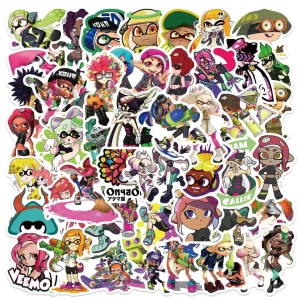A new release has gone viral across social media platforms for all the wrong reasons. Skull Island: Rise of Kong, released on Steam on October 17, has become the target of widespread online mockery, igniting a frenzy of criticism that’s impossible to ignore. But what exactly is it about this King Kong game that’s inspired such a collective reaction?
Developed by Iguanabee Entertainment, a Chilean studio known for balancing original titles with licensed properties, Skull Island: Rise of Kong follows the footsteps of other licensed games in the industry. It’s a straightforward 3D platformer with a recognizable brand, aiming to attract fans of King Kong’s various adaptations, including Netflix’s animated series. However, it’s not the game’s simplicity or licensing strategy that has caused this uproar.
One significant factor contributing to its unwelcome popularity is its comparison to Daedalic’s Lord of the Rings: Gollum, a game that, while not stellar, has been unfairly labeled by some as the worst game of the year. Such comparisons might seem logical given the shared prominence of these franchises, but they’re inherently unfair. The scale, resources, and ambition behind these games differ significantly, making the comparison akin to pitting apples against oranges.
Skull Island: Rise of Kong, despite its average gameplay and questionable visuals, is not without its merits. Watching the initial gameplay hours reveals that beneath the surface, the game offers an experience that’s, well, average. It’s the kind of game that might not win any awards but could entertain younger audiences, akin to the formulaic licensed titles many of us enjoyed during our childhoods.
However, what has escalated this situation beyond mere criticism is the game’s price tag: $40. Negative Steam reviews, focusing on the game’s bugs and issues, particularly during cutscenes, are a testament to players’ frustrations. The disappointment stemming from a seemingly unfinished product at such a price point is palpable.
Criticism of bad games isn’t new; the gaming industry has always had its share of lackluster releases. What’s changed is the way we, as consumers and content creators, react to these subpar offerings. With the rise of social media, bad games are no longer merely criticized; they are ripped apart, shredded to pieces, and labeled as “shovelware” or even worse, a “scam.” The discourse around bad games has become increasingly hyperbolic, leaving little room for understanding the nuances of game development.
There’s a peculiar dichotomy in our ecosystem: bad games, movies, books, or music, often possess a certain charm or silliness that makes them endearing, despite their flaws. Yet, in today’s online world, these products are treated as grave offenses, as if they’re deliberate attempts to deceive consumers. This intense scrutiny and criticism, while sometimes valid, also reflect a changing landscape where the line between legitimate critique and online ridicule blurs.
In the case of Skull Island: Rise of Kong, the game might not be a masterpiece, but it’s also not the abomination it’s made out to be. Perhaps it’s time for gamers and content creators alike to adopt a more nuanced approach, recognizing that even in the realm of bad games, there’s room for understanding and empathy. After all, in a world as diverse as gaming, every release, regardless of its quality, has an audience it can appeal to—even if it’s just for the sake of nostalgia or a momentary diversion.












